We’ve all heard phrases, such as, “Don’t forget to check your blinker fluid,” or “Sounds like your muffler bearings are bad.” These made-up parts and the infamous piston return springs are common ways of giving someone who isn’t extremely automotive savvy a hard time. Growing up in the automotive industry, I’ve heard these phrases used quite often. But recently, I heard someone add coolant filters to the mix. It made me laugh, coolant filters are real, they do exist, and they should be on every vehicle with a water-cooled engine. Semi-trucks and large heavy-duty equipment have benefited from the use of coolant filters for years. Why the light-duty market has never implemented their use is a mystery to me.
With the exception of only a few, our engines are sand-cast engines. The manufacturers use a sand mold. When the void inside is filled with molten metal, it forms an engine block. Once these parts have cooled, the sand is washed away. Many cylinder heads and other engine parts are manufactured this way, too. The manufacturers do a fairly decent job ridding the sand from these parts, but the truth is, they will never get it all out. Even if they do somehow manage to remove every last grain from the maze of oil and coolant passageways, sand continues to leach from the cast-iron block, most commonly due to corrosion.
"DieselSite’s Coolant Filtration System comes complete with everything needed to install, including one of the best sets of instructions we’ve seen yet."
This sand mixed with a multitude of other contaminants, such as those derived from supplemental coolant additives and mineral deposits to name a couple, will damage water pumps and eventually lead to premature failure. At the same time, these contaminants will clog up smaller coolant passageways found in -- but not limited to -- radiators, oil coolers, and EGR systems. These clogs are what cause many of these parts to fail. The 6.0-liter Powerstroke’s oil cooler is a perfect example. When an oil cooler clogs, the oil used to lubricate the engine is hotter than it should be. It results in increased wear to every moving part lubricated with engine oil, which eventually leads to catastrophic engine failure if not replaced in time.
Adding a quality coolant filtration system to an engine prolongs water pump service intervals and helps the engine run the way it was designed to run. Many engines will see increased injector life, reduced turbo wear, and an all-around more efficient engine over the long run due to a more efficient coolant system.
For our 2001 Ford F-250 Project Ultimate Tow Rig, we turned to our trusted friends at DieselSite and ordered up one of their Coolant Filtration Systems. The DieselSite kit grabs a coolant supply from a fitting on the water pump outlet, and the water pump moves the coolant through a commonly found filter specially designed for coolant. From there, the filtered coolant re-enters the system via the degas bottle. DieselSite designed this kit to be a bypass filtration system. If the filter ever clogs, the coolant bypasses the filter, and therefore, doesn’t hinder the cooling system’s efficiency in any way. The DieselSite kit included all the parts (except for coolant) needed do the job right. It was extremely simple to install and took only an hour and a half.
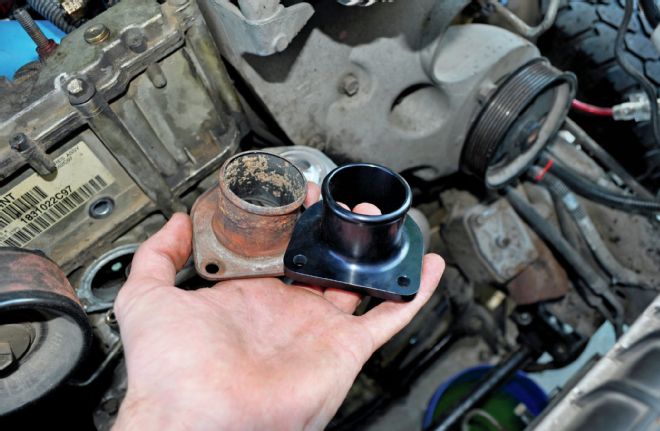
| 2001 Ford F 250 DieselSite Coolant Filtration System 02
Before we started the new filter install, we drained off a gallon or two of coolant and swapped out our old corroded stamped-steel thermostat, which was leaking, with a new and stronger billet aluminum part from DieselSite.
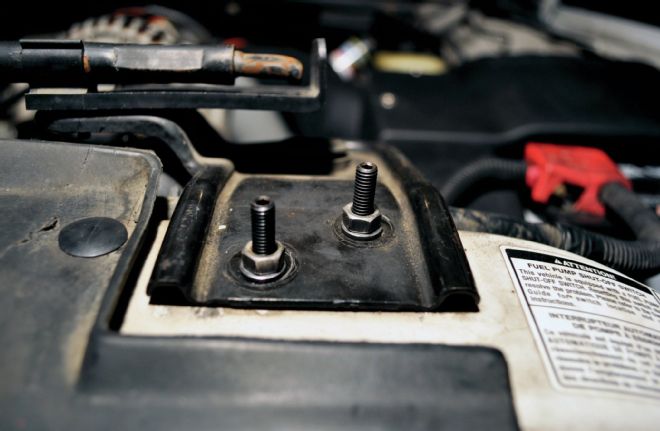
| 2001 Ford F 250 DieselSite Coolant Filtration System 03
The filter and manifold assembly bolts up to the radiator core support with the two provided studs, which replace the radiator mounting bolts.
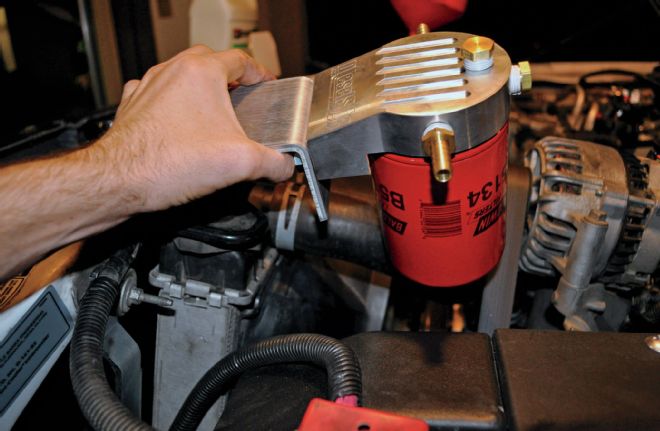
| 2001 Ford F 250 DieselSite Coolant Filtration System 04
It’s much easier to install the inlet fitting, outlet fitting, two plugs, and the filter onto the manifold prior to bolting the bracket and manifold onto the truck.
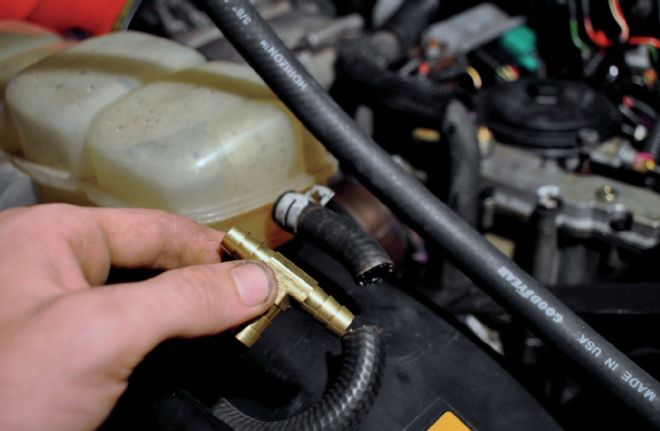
| 2001 Ford F 250 DieselSite Coolant Filtration System 05
The return connection is made with a T-fitting in the radiator overflow line at the Degas bottle.
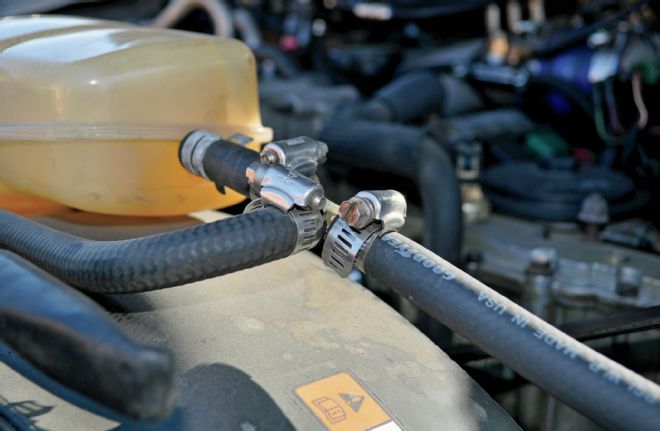
| 2001 Ford F 250 DieselSite Coolant Filtration System 06
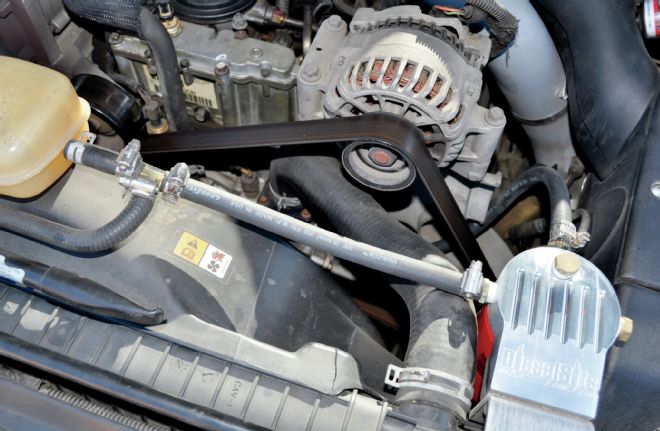
| 2001 Ford F 250 DieselSite Coolant Filtration System 07
The tapped off line then routs straight to the return fitting on the side of the DieselSite manifold.
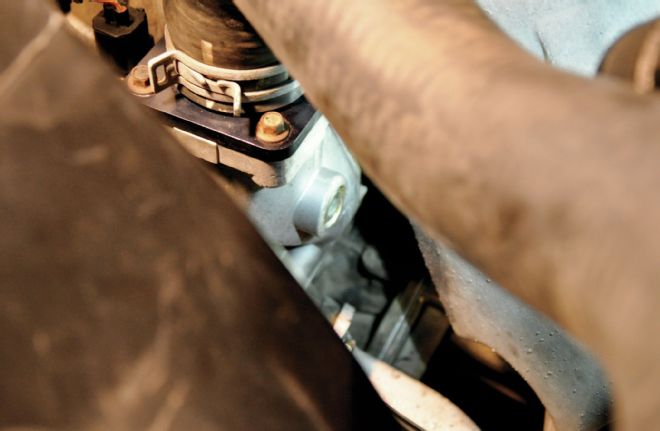
| 2001 Ford F 250 DieselSite Coolant Filtration System 08
Tap into a supply of coolant with a connection just below the thermostat housing on our 7.3-liter. This is on the supply-pressurized side of the water pump.
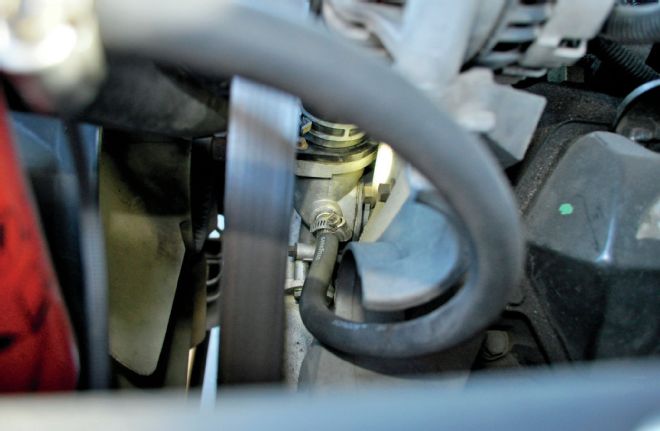
| 2001 Ford F 250 DieselSite Coolant Filtration System 09
We removed the existing plug with an Allen key and installed the supplied fitting and hose.

| 2001 Ford F 250 DieselSite Coolant Filtration System 10
When routing the supply hose to the DieselSite Filter Manifold, we had to get a bit creative in order to miss contacting the accessory drive belt with the hose. A half twist of the hose to create a natural bend worked perfectly.
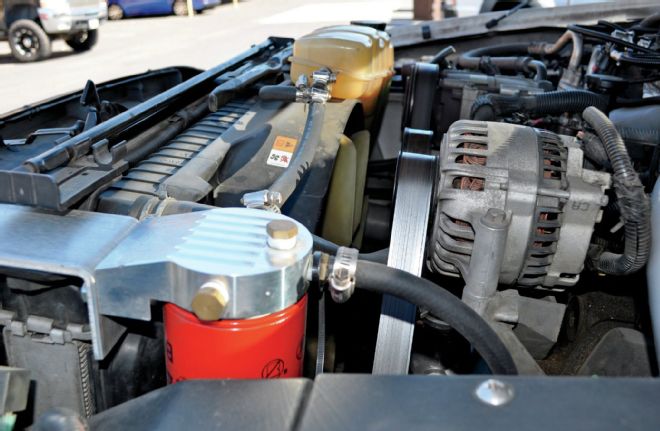
| 2001 Ford F 250 DieselSite Coolant Filtration System 11
All said and done, the install took just over an hour. Filter changes should be done every three months during the first nine months. After that, the majority of system contaminants should be gone. Filter changes once a year are all that is needed in most situations.
 | 2001 Ford F 250 DieselSite Coolant Filtration System 02
Before we started the new filter install, we drained off a gallon or two of coolant and swapped out our old corroded stamped-steel thermostat, which was leaking, with a new and stronger billet aluminum part from DieselSite.
| 2001 Ford F 250 DieselSite Coolant Filtration System 02
Before we started the new filter install, we drained off a gallon or two of coolant and swapped out our old corroded stamped-steel thermostat, which was leaking, with a new and stronger billet aluminum part from DieselSite.
 | 2001 Ford F 250 DieselSite Coolant Filtration System 03
The filter and manifold assembly bolts up to the radiator core support with the two provided studs, which replace the radiator mounting bolts.
| 2001 Ford F 250 DieselSite Coolant Filtration System 03
The filter and manifold assembly bolts up to the radiator core support with the two provided studs, which replace the radiator mounting bolts.
 | 2001 Ford F 250 DieselSite Coolant Filtration System 04
It’s much easier to install the inlet fitting, outlet fitting, two plugs, and the filter onto the manifold prior to bolting the bracket and manifold onto the truck.
| 2001 Ford F 250 DieselSite Coolant Filtration System 04
It’s much easier to install the inlet fitting, outlet fitting, two plugs, and the filter onto the manifold prior to bolting the bracket and manifold onto the truck.
 | 2001 Ford F 250 DieselSite Coolant Filtration System 05
The return connection is made with a T-fitting in the radiator overflow line at the Degas bottle.
| 2001 Ford F 250 DieselSite Coolant Filtration System 05
The return connection is made with a T-fitting in the radiator overflow line at the Degas bottle.
 | 2001 Ford F 250 DieselSite Coolant Filtration System 06
| 2001 Ford F 250 DieselSite Coolant Filtration System 06
 | 2001 Ford F 250 DieselSite Coolant Filtration System 07
The tapped off line then routs straight to the return fitting on the side of the DieselSite manifold.
| 2001 Ford F 250 DieselSite Coolant Filtration System 07
The tapped off line then routs straight to the return fitting on the side of the DieselSite manifold.
 | 2001 Ford F 250 DieselSite Coolant Filtration System 08
Tap into a supply of coolant with a connection just below the thermostat housing on our 7.3-liter. This is on the supply-pressurized side of the water pump.
| 2001 Ford F 250 DieselSite Coolant Filtration System 08
Tap into a supply of coolant with a connection just below the thermostat housing on our 7.3-liter. This is on the supply-pressurized side of the water pump.
 | 2001 Ford F 250 DieselSite Coolant Filtration System 09
We removed the existing plug with an Allen key and installed the supplied fitting and hose.
| 2001 Ford F 250 DieselSite Coolant Filtration System 09
We removed the existing plug with an Allen key and installed the supplied fitting and hose.
 | 2001 Ford F 250 DieselSite Coolant Filtration System 10
When routing the supply hose to the DieselSite Filter Manifold, we had to get a bit creative in order to miss contacting the accessory drive belt with the hose. A half twist of the hose to create a natural bend worked perfectly.
| 2001 Ford F 250 DieselSite Coolant Filtration System 10
When routing the supply hose to the DieselSite Filter Manifold, we had to get a bit creative in order to miss contacting the accessory drive belt with the hose. A half twist of the hose to create a natural bend worked perfectly.
 | 2001 Ford F 250 DieselSite Coolant Filtration System 11
All said and done, the install took just over an hour. Filter changes should be done every three months during the first nine months. After that, the majority of system contaminants should be gone. Filter changes once a year are all that is needed in most situations.
| 2001 Ford F 250 DieselSite Coolant Filtration System 11
All said and done, the install took just over an hour. Filter changes should be done every three months during the first nine months. After that, the majority of system contaminants should be gone. Filter changes once a year are all that is needed in most situations.